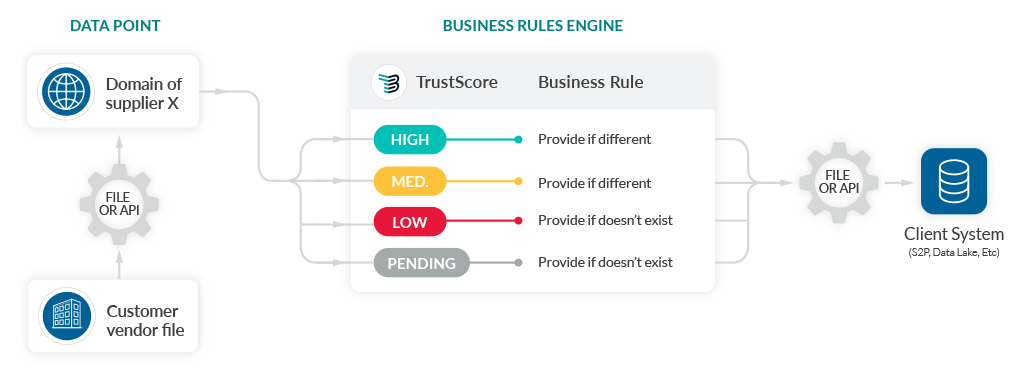Picture this: It’s a crisp Monday morning, Jane’s coffee is still warm, and she’s ready to conquer the week. Suddenly, an email from her manager pops into her inbox with an unexpected, but simple request: “Please share the address for Company ABC, I need it ASAP.”
This should be pretty straightforward, so Jane gets to work. But, once she dives into her company’s ERP, she’s met with a sea of confusion, in the form of eight different addresses listed for Company ABC.
To get to the bottom of it, she finds herself cross-referencing multiple systems, combing through outdated spreadsheets, searching past Purchase Orders, and consulting with colleagues to unravel the mystery of the company’s address. This back-and-forth process is not only time-consuming but also frustrating, and Jane soon realizes her “simple task” could take several days, or weeks to figure out.
The data problem
Let’s face it, Jane’s problem isn’t unique. For most large organizations, supplier data is questionable. It’s often input manually and rarely updated. In many cases, new entities of the same vendor are created in an organization’s ERP, resulting in duplicate and conflicting data (like in Jane’s case).
And although procurement technologies have evolved and expanded to improve operations for procurement teams, they’re all still dependent upon quality supplier data. So, when it’s time to get back to her manager, how can Jane be certain that she’s providing the right address?
By adopting a Supplier Data Platform that provides attribute-level TrustScores.
What are TrustScores?
TrustScores are confidence scores ranking from “Very High” to “Very Low” assigned to every attribute gathered by TealBook’s Supplier Data Platform. They aren’t determined in a one-size-fits-all way; they vary depending on the attribute type. For example, if multiple data sources confirm the “Year Founded” as the same, it gets a ‘High’ TrustScore. On the flip side, certain attributes like diversity certificates, which come from a single certifying body, get their TrustScore based on how confident TealBook is in that specific source. As a result, the TrustScore stays consistent across all certificate-level attributes.
The more sources that agree on a data point, the higher the confidence score will be. Conversely, factors like disparities between data from different sources, several changes over time, and past inaccuracies will generate a lower confidence score. These low scores signify that additional validation will be needed in order to confirm the accuracy of that data point.

Benefits of TrustScores
The TrustScore feature offers many benefits that can change your organization’s approach to supplier data. It serves as a validation system, allowing you to determine the level of trust you’re willing to place in a given matter – would you, for instance, accept a data attribute with a medium TrustScore?
As a crucial component of TealBook’s Supplier Data Platform, TrustScore stands as the only method to authenticate the quality of an organization’s supplier data in real time.
And, TrustScores empower you to make decisions at the attribute level through the Business Rules Engine. You have the flexibility to set the trust threshold per attribute – maybe you’re comfortable with a medium level for Business Type but require a high level for Name.

So, let’s go back to Jane and look at what her work path would’ve been if her organization had access to TrustScores with TealBook’s Supplier Data Platform.
Data confusion to data confidence
TrustScores ensure that your data is perpetually enriched with reliable information. This means you can divert your energies from data cleansing and analysis to more strategic tasks. With TrustScore, your data management becomes not just simpler, but also more effective and trustworthy, leaving you with validated, real-time supplier data at your fingertips.
Learn more about the TrustScores available in TealBook’s Supplier Data Platform.

